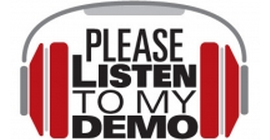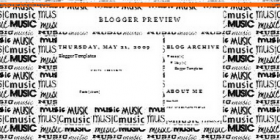As a musician, it is vital that you listen to your audience as much as you’d like them to listen to you. Sometimes that could mean going through a change. The Beastie Boys did it, Katy Perry did it, and the Black Eyed Peas did it among many others. At one point, these artists shifted their focus towards a newly refined target audience after realizing that their existing audience responded well to subtle facets of what they had to offer, and in some cases, embraced a completely new direction all together. Eric Ries, Silicon Valley entrepreneur and author of The Lean Startup, refers to this maneuver as a “pivot.”
- The Zoom-in Pivot: When a feature within a larger product or system becomes the entire product
- The Customer Segment Pivot: Changing the customer segment based on validated learning about your existing customer segment
What we are not talking about here is the old adage “the customer is always right.” That idea exists primarily for the sake of a customer feeling satisfied now, so that they spend more money over the long run with repeated transactions. What we are talking about is the idea of gauging genuine reactions and impressions from your audience, and then making validated adjustments to capitalize on the positive ones and reduce the negative ones.
Pivots of the Past
The Beastie Boys for instance had initially started out as a hardcore punk band. Then one day, after messing around with the idea in the studio, they began incorporating rap elements into their live performances for sheer amusement. After discovering that their audience responded well to a hip-hop element, they would eventually perform a “zoom-in pivot” – taking what was once a feature of their offering (hip-hop) and turned it into what they’re known for today. In essence, The Beastie Boys market-tested their hip-hop element and pivoted towards a new direction once their audience responded well to it. They now hold a place in The Rock and Roll Hall of Fame.
Katy Perry is another good example. Before she was Katy Perry, she was Katy Hudson – a Christian gospel singer releasing wholesome spiritual music aimed at a relatively small audience that lacked mass-market appeal. She then underwent a “customer segment pivot” by altering her look (and thus her marketing) from “good girl” to “sexy bad girl.” Her lyrical content followed suit; from Christian worship to edgy and sexually suggestive. Both of these led to the natural shift in her market segment, from teenagers who listen to Christian soft rock to the mainstream. She is now one of the highest selling artists in history.
Pivoting vs. Resetting
Some artists may feel that the idea of responding to audience satisfaction may result in the tainting of the art itself, as it can be seen as “catering” to an audience. Pivoting does not mean resetting. It doesn’t mean that you should adjust your sound to fit with whatever is hot or popular. Don’t become a pop artist merely for the sake of going pop, but if your existing audience happens to respond well to particular pop elements in your music, and you can then incorporate your own genuine artistic flavor to the mix, you might be surprised with the results of such a pivot.
It’s important to note that a pivot must occur over time, and that it must be validated by evidence. Don’t assume that your audience is going to love your new direction because you love your new direction, or because a small pool of respondants (i.e. your friends and family) likes your new direction. Experiment regularly, and don’t be afraid to communicate closely with your audience. Experimenting can keep your fans on their toes, and it will allow you to keep your art fresh and inspired. Once comfortable, try incorporating your new sounds into your live set one night and begin to gauge. Or begin releasing singles that feature your new style and ask for feedback. This could potentially draw in new fans that may not have discovered you otherwise, and they can be turned on to you as a result.
Your Audience is the Best Gauge
Chris Anokute, Senior VP of A&R at Universal Motown (and A&R for Katy Perry), revealed at last April’s ASCAP “I Create Music Expo” in Los Angeles his basic methodology for gauging an artist’s talent and potential success:
“As an A&R, I spend less time watching what’s happening on stage and more time watching what’s happening in the crowd.”
By paying more attention to what your fans actually want, they may begin paying more attention to you.
Via Hypebot






